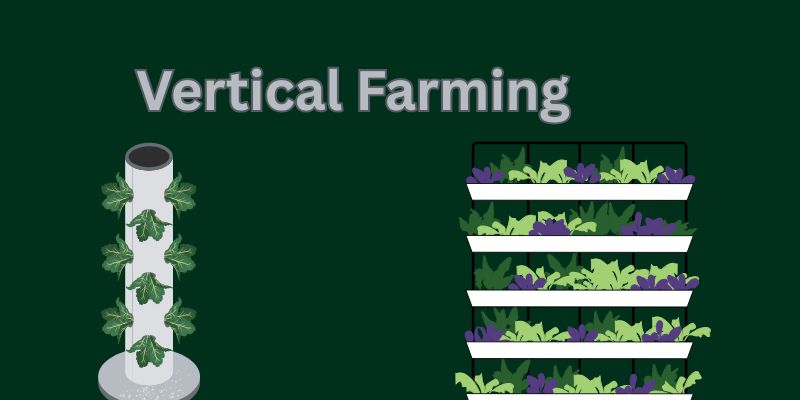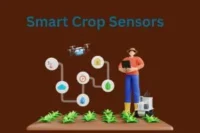Vertical Farming: The Future of Food is Growing Up, Not Out
Published: 26 May 2025
In 2050, the global population is expected to surpass 9.7 billion, demanding a 70% increase in food production—yet arable land and freshwater resources are rapidly shrinking. Traditional agriculture consumes over 70% of global freshwater and is a leading contributor to deforestation and greenhouse gas emissions. Vertical farming offers a revolutionary solution by growing food in stacked layers, often indoors, using up to 95% less water and 90% less land than conventional methods. As cities expand and climate change accelerates, vertical farming isn’t just an innovation—it’s a necessity for feeding the future.
So, guys, without wasting time, let’s jump into the article to learn the Vertical Farming: The Future of Food is Growing Up, Not Out
What Is Vertical Farming?
Vertical farming is a method of growing crops in vertically stacked layers, often in controlled indoor environments. It typically uses soilless techniques like hydroponics, aeroponics, or aquaponics, and relies on artificial lighting, automation, and climate control to optimize plant growth. This approach maximizes space efficiency and allows for year-round food production in urban or limited-space settings.

A method of growing crops in vertically stacked layers
Commonly done indoors in climate-controlled environments
Often uses hydroponics, aeroponics, or aquaponics (no soil)
Uses LED lights, automation, and controlled temperature/humidity
Maximizes space and enables year-round food production
Benefits of Vertical Farming
Break this down into high-impact, value-driven bullet points:
- Uses up to 95% less water than traditional farming.
- Requires significantly less land and can be built in urban spaces.
- Enables year-round crop production in controlled environments.
- Eliminates pesticide use and reduces food transportation costs.
- Produces higher yields per square meter.
How Vertical Farming Works
Structure this section as clear, digestible parts:
- LED Grow Lights: Replicate sunlight and support plant growth in enclosed spaces.
- Hydroponics and Aeroponics: Replace soil with nutrient-rich water or mist.
- Automation and Sensors: Monitor and optimize temperature, humidity, and nutrients.
- Climate Control Systems: Maintain ideal growing conditions regardless of external weather.
Crops Grown in Vertical Farms
Include a categorized list of common crops:
- Leafy Greens: Lettuce, spinach, kale, arugula.
- Herbs: Basil, mint, cilantro, parsley.
- Fruits: Strawberries, cherry tomatoes, dwarf varieties.
- Microgreens and Edible Flowers: Quick-growing and nutrient-dense.
Types of Vertical Farming Systems
Outline major system types:
- Stacked Horizontal Systems: Shelves or trays placed in layers.
- Tower Systems: Vertical columns with plants growing outward.
- Shipping Container Farms: Self-contained farms inside repurposed containers.
- Wall-Mounted Gardens: Space-saving designs for homes or restaurants.
Emotional and Social Impact
Frame vertical farming as a movement with deeper meaning:
- Enables communities to produce clean, healthy food locally.
- Empowers urban areas to reduce food deserts and increase access.
- Reconnects people with how their food is grown.
- Supports education, sustainability awareness, and mental well-being.
The Future of Vertical Farming
Present key trends and opportunities:
- Growing demand for local, pesticide-free food.
- Major investment from tech companies and governments.
- Innovations in AI, energy efficiency, and robotics.
- Potential to feed 10 billion people sustainably by 2050.
How to Start Vertical Farming at Home
Offer practical, action-driven advice:
- Start small with a countertop hydroponic garden or vertical tower kit.
- Choose fast-growing crops like lettuce or herbs.
- Ensure access to grow lights, water, and ventilation.
- Upgrade to modular or stackable systems as you gain experience.
FAQs about Vertical Farming
Here are some of the most frequently asked questions about the advantages and disadvantages of the Internet
Not exactly. While plants can grow on walls, vertical farming usually means growing crops in stacked layers or shelves inside buildings using controlled systems.
No, hydroponics is just one type. There’s also aeroponics (growing plants in mist) and aquaponics (combining fish farming with plant growth).
Actually, most vertical farms don’t use soil at all. They use water, nutrients, and sometimes air to grow plants—making the process cleaner and more efficient.
Kind of! Aeroponics skips the water tanks and instead sprays a nutrient-rich mist onto the plant roots, giving them oxygen and food at the same time.
It might sound simple, but aquaponics is a smart system where fish waste feeds the plants, and the plants clean the water for the fish. It’s a natural loop.
Conclusion
Vertical farming is a modern agricultural method that involves growing crops in stacked layers, usually indoors, using advanced technologies like LED lighting, hydroponics or aeroponics, and automated climate control. It addresses major global challenges such as land scarcity, water shortages, and the environmental impact of traditional farming. By using up to 95% less water and requiring significantly less space, vertical farming enables year-round, pesticide-free food production close to urban centers. Understanding this approach is crucial as it represents a sustainable solution for feeding a growing population while minimizing environmental harm and making fresh, local produce more accessible worldwide.

- Be Respectful
- Stay Relevant
- Stay Positive
- True Feedback
- Encourage Discussion
- Avoid Spamming
- No Fake News
- Don't Copy-Paste
- No Personal Attacks

- Be Respectful
- Stay Relevant
- Stay Positive
- True Feedback
- Encourage Discussion
- Avoid Spamming
- No Fake News
- Don't Copy-Paste
- No Personal Attacks





